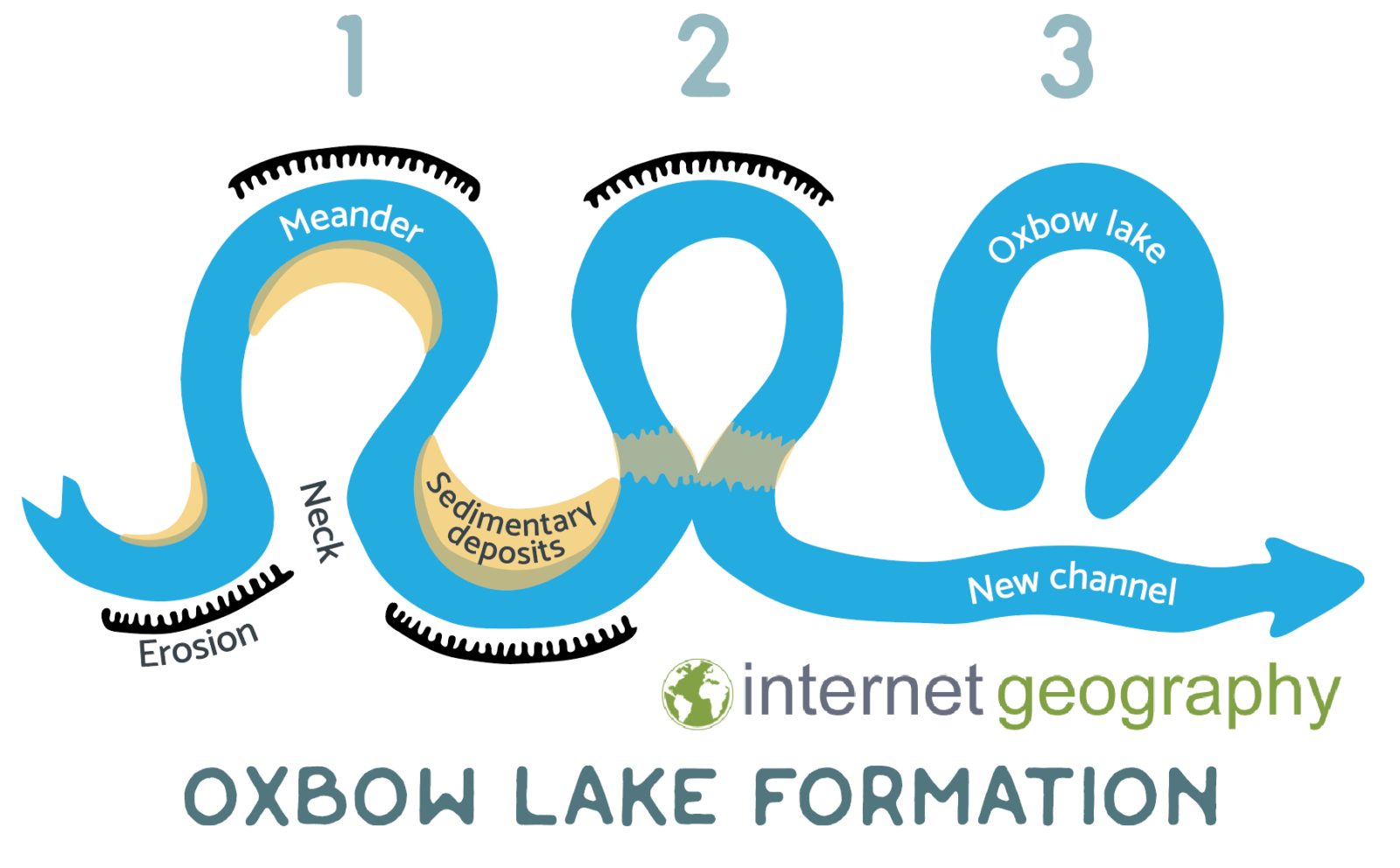Meanders and Oxbow Lakes Flashcards
Due to erosion on the outside of a bend and deposition on the inside, the shape of a meander will change over a period of time. Erosion narrows the neck of the land within the meander and as the process continues, the meanders move closer together. When there is a very high discharge (usually during a flood), the river cuts across the neck, taking a new, straighter and shorter route. Deposition will occur to cut off the original meander, leaving a horseshoe-shaped oxbow lake.
Find out more about meanders and oxbow lakes.
Find out more about meanders and oxbow lakes.
An oxbow lake is a small, horseshoe-shaped lake that is located several meters from a straight stretch of river.
Find out more about meanders and oxbow lakes.
Water flows slowly over shallow areas (riffles) in the riverbed and faster through pools, deeper sections of the river. This leads to helicoidal flow that corkscrews from one bank to another. Fast flowing water on the outside bank causes lateral erosion through hydraulic action and abrasion which undercuts the bank, creating a river cliff. The eroded material is then deposited on the inside of the next meander where friction slows the flow, creating a slip-off slope.
Find out more about meanders and oxbow lakes.
Share this:
- Click to share on X (Opens in new window) X
- Click to share on Facebook (Opens in new window) Facebook
- Click to share on Pinterest (Opens in new window) Pinterest
- Click to email a link to a friend (Opens in new window) Email
- Click to share on WhatsApp (Opens in new window) WhatsApp
- Click to print (Opens in new window) Print

